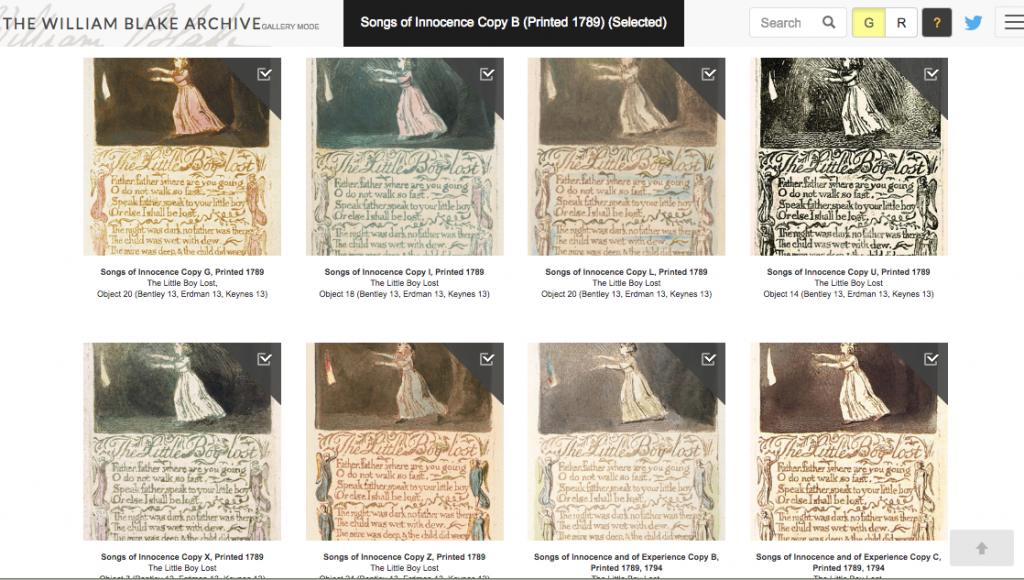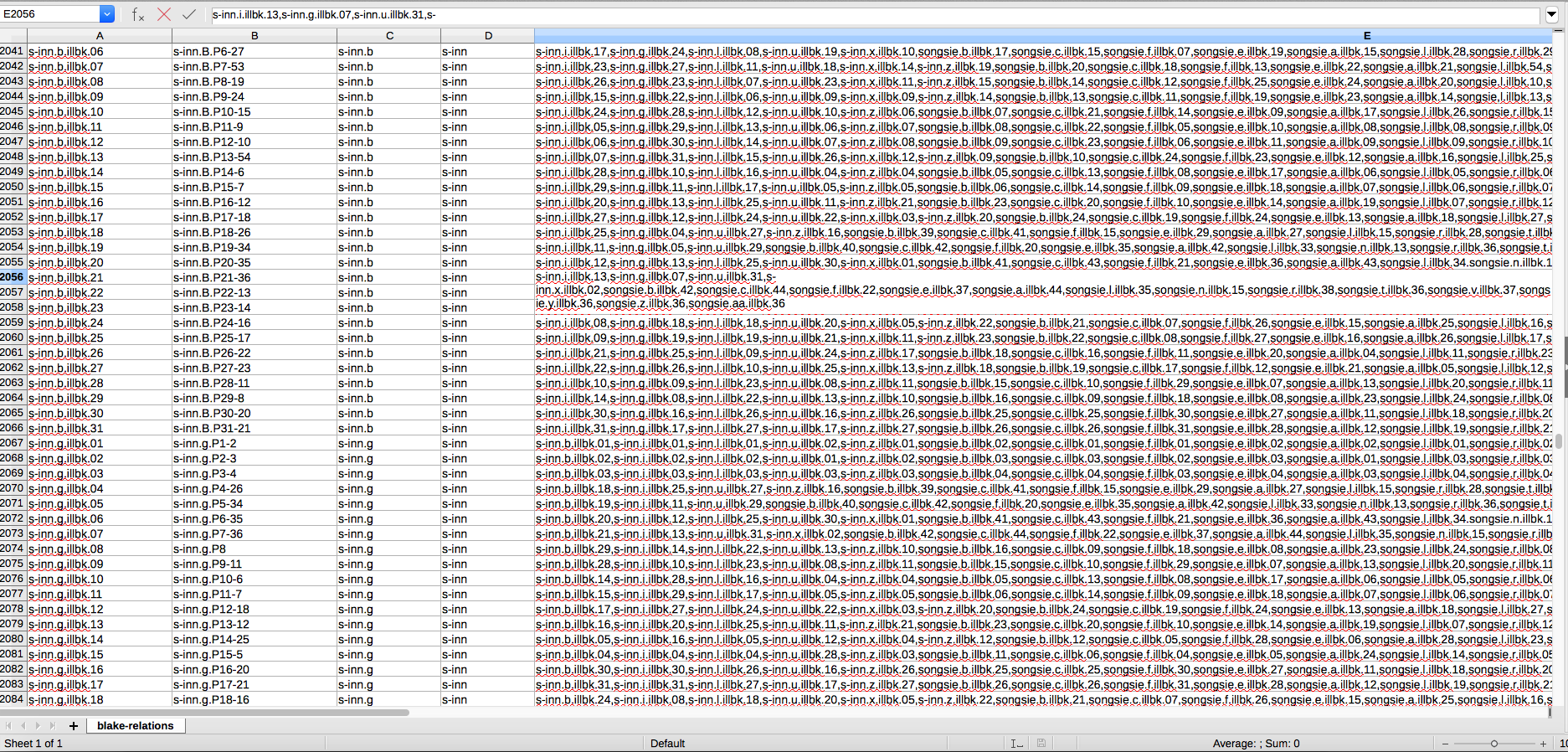A few years ago I was having drinks with someone I had recently met through an interdisciplinary research/reading group at the University of North Carolina. He was a geneticist. In the course of our conversation he confided that he no longer read books, especially those books having to do with literature. Since everything reduced to genetic coding, which revealed itself in its own inscrutable (to me, even though he tried to explain it) language, all macrocosmic products of human artistry were epiphenomenal, superfluous. We were just humming flesh lumps elaborately but programmatically spun out from inherited scripts. He stared hard into his ice cubes as he said this. I’d quote him, but I can’t remember his exact words.
I went home, eager to return to my familiar environment and habits, as I always am after an interaction with new people. I got into my loops, as I like to say. And I’m not alone in deploying this metaphor, borrowed from computing terminology, to describe the human mind and human behavior. There has been some pushback against the predominance of the computer/brain metaphor, but these are voices in the wilderness, no, slight static along the wires. For the most part, no one will bat an eye if I say that I’m “wired” to do this or that thing that I do, these determined behaviors—exhaling sharply through my nose when I find something funny, choosing Milk Duds over Junior Mints before watching I, Robot—that make the me you know. We’re like computers, and computers are like us as well, becoming more like brains.
Westworld, a current popular HBO series, provocatively blurs the distinction between this metaphrand and metaphier, with its human actors who memorize scripts to play sympathetic robot “hosts” in an AI theme park modeled on a 19th-century western frontier town, frequented by human “guests” who fall into predictable patterns of brothel-frequenting and killing. Anthony Hopkins plays the soft-spoken, twinkly-eyed Creator of the loops—or narratives—that the robot hosts follow, and he often pauses unexpectedly in the middle of delivering a passage from Shakespeare that he occasionally sprinkles into his dialogue with other characters, humans and robots alike. He says the lines in such a way—stilted, wistful, staring vacantly into the middle distance—that makes me think: that’s classic Anthony Hopkins; he probably doesn’t even think about his unique delivery anymore. I can’t remember the exact words of Shakespeare that he quotes.
Westworld suggests that we’re all on loops, that we prefer them, despite our talk and dreams of freedom (novelty), some unknown land across the river. Loops have been a big part of my life. I’m a creature of habit. Perhaps I inherited those genes from my mother, who invariably made us the same breakfast corresponding to each day of the week: Monday = waffles, Tuesday = pancakes, Wednesday = cereal, etc. My father used to joke that upon waking he wouldn’t know who or where he was until he saw what was for breakfast. That wasn’t exactly how he said it. I can’t remember his words. But of course there’s the problem of the difference (abyss?) between the sentient-me lifting the syrup-drenched waffle chunk to my salivating maw and the cognizant-me who is aware of the sentient-me dropping into my loops, who feels the satisfaction of sliding along my rails. What to make of that duality? An old problem. The only problem.
“Father, father, where are you going?”
Part of what makes the digital humanities fun and exciting is that the robots can be programmed to do a great deal of loopwork, freeing the humans to ask novel questions and pursue untrodden paths through their regions of study. The redesign of the Blake Archive helpfully automated many aspects of the more repetitive, tedious work that we do. But I have the sense that no matter how new the technology, digital humanities projects can never fully divest themselves of the need for repetitive, tedious work to be done by humans. We’ll never not need to loop.
“Or else I shall be lost.”
A case in point: the Archive’s compare feature allows users to inspect all copies of, say, “The Little Boy Lost” across both Songs of Innocence and Songs of Innocence and of Experience.

This ability to compare objects from the same “matrix,” which in the case of illuminated books means printed from the same copper plate, is one of many types of relationships made available by the Archive. The crucial database component that enables such relationships to be generated and displayed is what we call the blake-relations.csv document. It’s basically a huge spreadsheet that lists every individual object in the Archive and specifies its relationship to other objects in the Archive. I’ve spent a lot of loop time within this document over the past few months. Here’s what a section of it looks like, for the objects in Songs of Innocence copy B:

If you zoom in you can see five columns (there are more, but these will do for this example). Column A lists the unique “desc id” which is associated with all the editorial information for each unique object in the Archive. Column B lists the titles that we assign to the image file for each object. For illuminated books, our image titles follow the broad work-copy-object structure that governs most of the Archive. “s-inn.B.P22-13” is the title for “The Little Boy Lost” of copy B of Songs of Innocence (s-inn). “P22-13” means that the poem occurs as plate 22 in copy B, but is designated as plate 13 in G. E. Bentley’s ordering of the plates of Songs in his Blake Books catalog, which serves as our touchstone when it comes to the illuminated books. Columns C and D list the copy and work, respectively, to which each object belongs. Column E then contains all of the other lost little boys in every other copy of Songs in the Archive. There are a lot of those boys, reaching with the gloomy trees above them toward some vague triangular patch of light, and there will be more to come.
“The night was dark.”
A great many of cells in the blake-relations.csv could be populated automatically, thanks to scripts generated by our technical editor, Mike Fox. But not all of them. And that’s where I come in. Blake resists the machine in many ways, and a major obstacle to applying digital automation to his corpus is due to his re-ordering of plates in different copies of illuminated books, thus necessitating that hyphenated number (P22-13) in the titles. “The Little Boy Lost” is object 22 in copy B, but it’s object 20 in copy G, object 18 in copy I, etc. In fact, in none of the copies of Songs of Innocence published in the Archive does the poem actually occur as the 13th object; that coincidence between object number in a specific copy and Bentley number occurs in only five copies of Songs of Innocence and of Experience currently published—the image of the object in copy Z, for instance, has the unhyphenated title, “songsie.Z.P13.” In designating “Little Boy Lost” as plate 13, Bentley was following editorial protocol and ordering the plates according to the last five copies of Songs that Blake printed in his lifetime, which when considered along with all copies of Songs (including the Songs of Innocence) constitute a minority.
Thanks, Blake. But really, thanks, Bentley, too, since the unvarying 13 makes it so that a nimble script could group all these related objects by picking out the numeral after the hyphen, or after the “P” when there is no hyphen in the title. But as Mike explained, even this was tricky, given the constraints of the csv (comma separated value) and Unicode 8 format, and some other reasons I can’t remember. But the even more daunting challenge to automation occurs at the work-level of the title in this case. The script would see Songs of Innocence (s-inn) and Songs of Innocence and of Experience (songsie) as separate works. Which they are. Technically. Even though we human Blake scholars know that the former is contained in the latter, that little innocent boys have to get lost before they can become experienced fathers who for some reason (it’s in their genes?) “walk so fast” away from their sons and do not speak to them. The problem is that the scripts we were using were helpless to see relatedness when confronted with two different work titles, since the object 13 that Bentley designates for America is not the same as the object 13 he designates for Songs.
“The mire was deep.”
Long story short: someone (me) had to go through and manually enter in column E the titles for all the s-inn objects that related to all the songsie objects, and vice versa. Copy and paste made this go more quickly than it otherwise would have, but it still took many hours (“do not walk so fast”).
“the child did weep.”
I could complain about the tedious drudgery of such work, and I have. But you know me, or part of me. The part of me that likes looping, having a clearly defined task, not having to improvise. Concentrating, but not really thinking. That’s part of DH work, too. And it got done. And now we have this new site.
I wish I could remember that geneticist’s name. If only it was stored somewhere in my brain, like a file to be read and retrieved by a savvy script.
“And away the vapour flew.”

Way cool! Some extremely valid points! I appreciate you penning this write-up and the rest of the site is also very good.